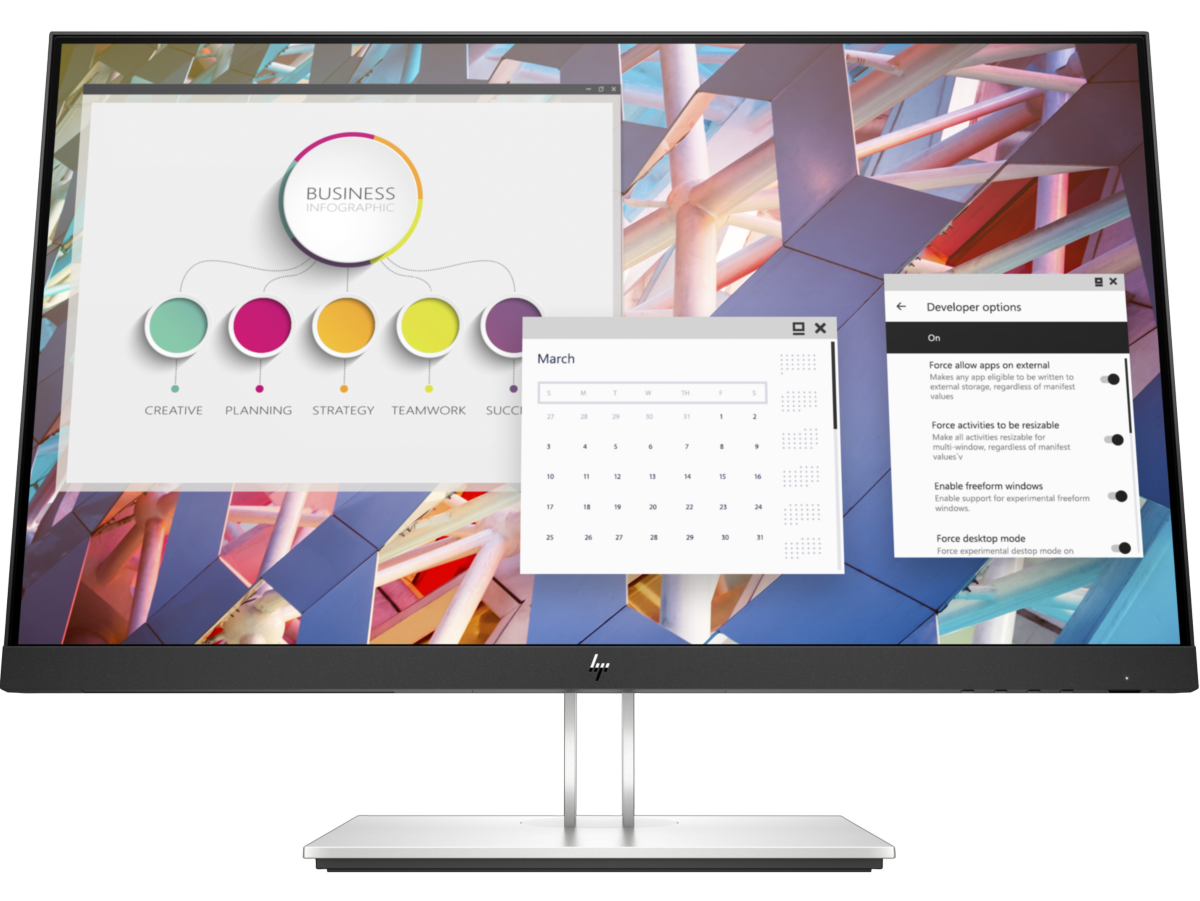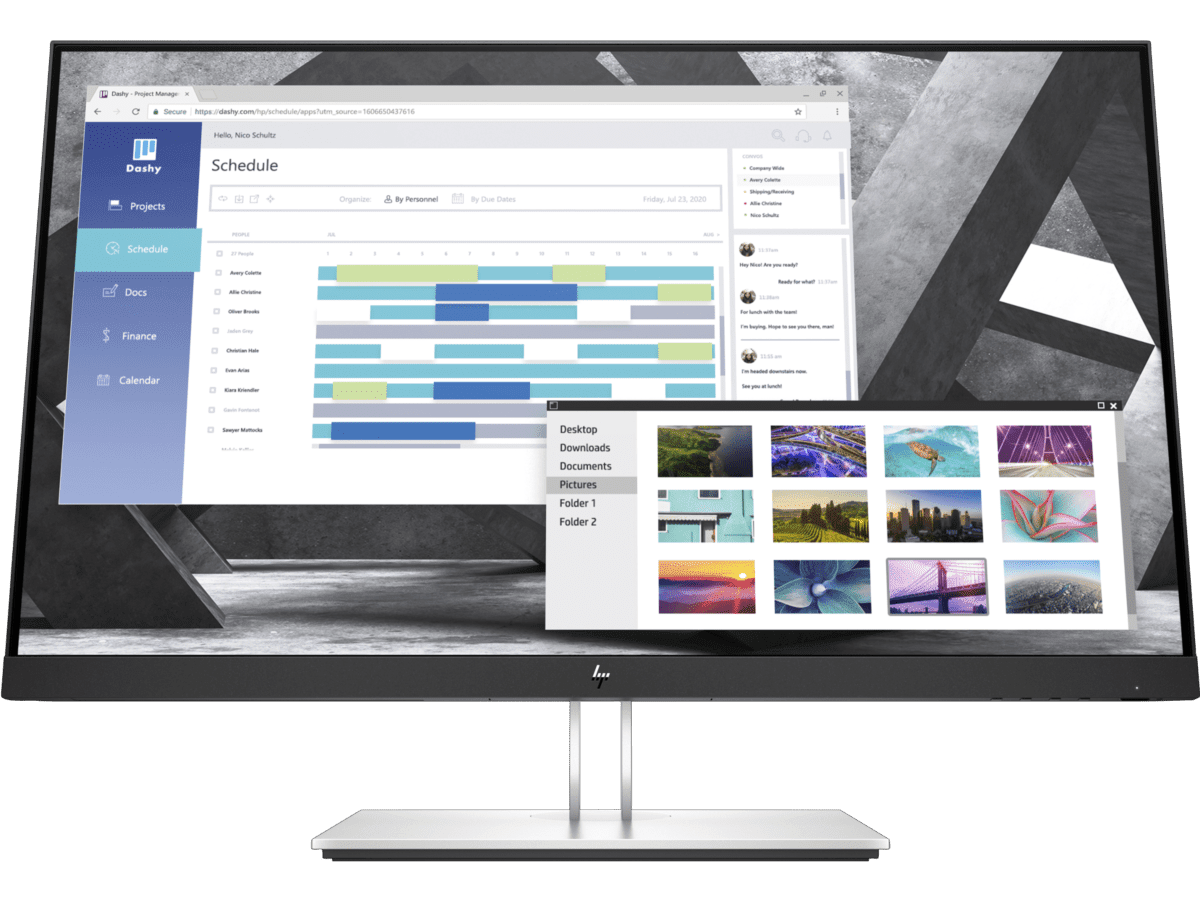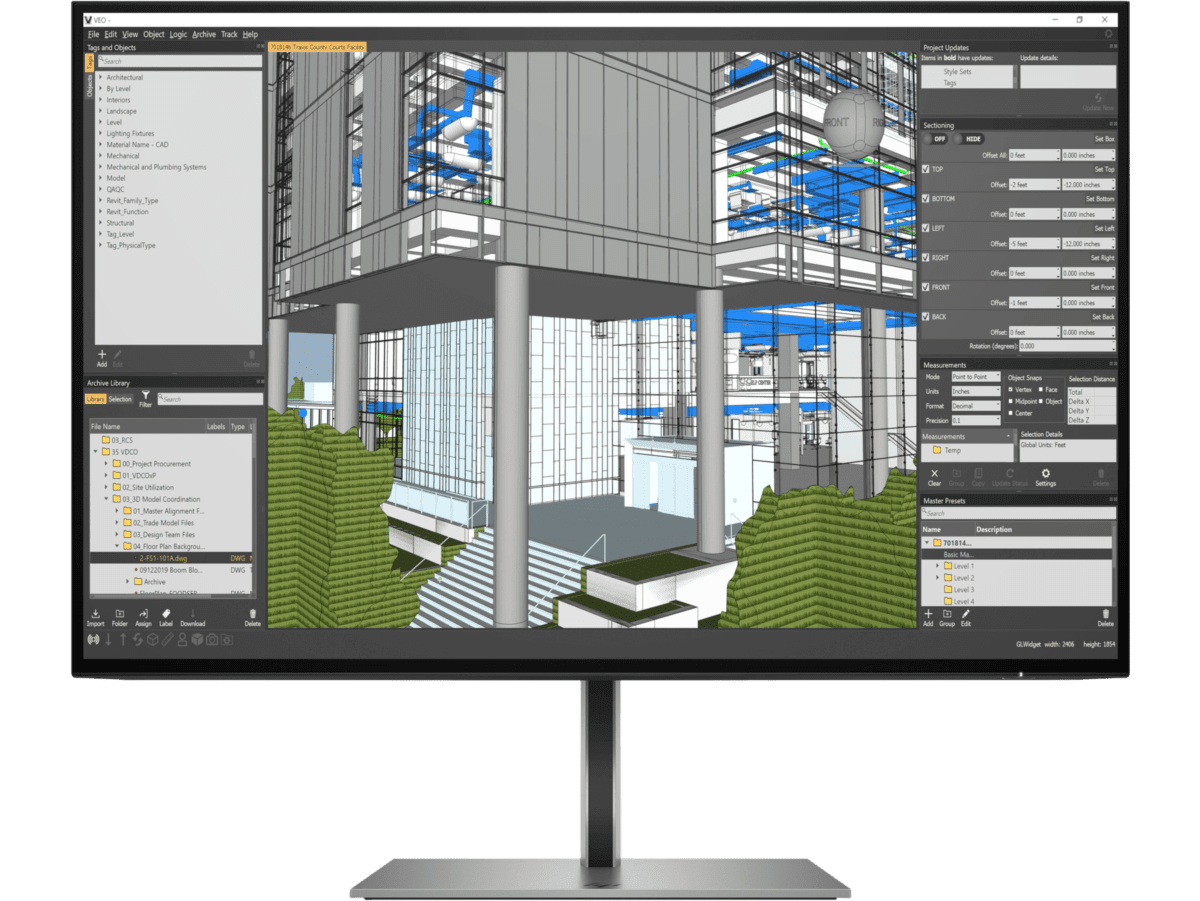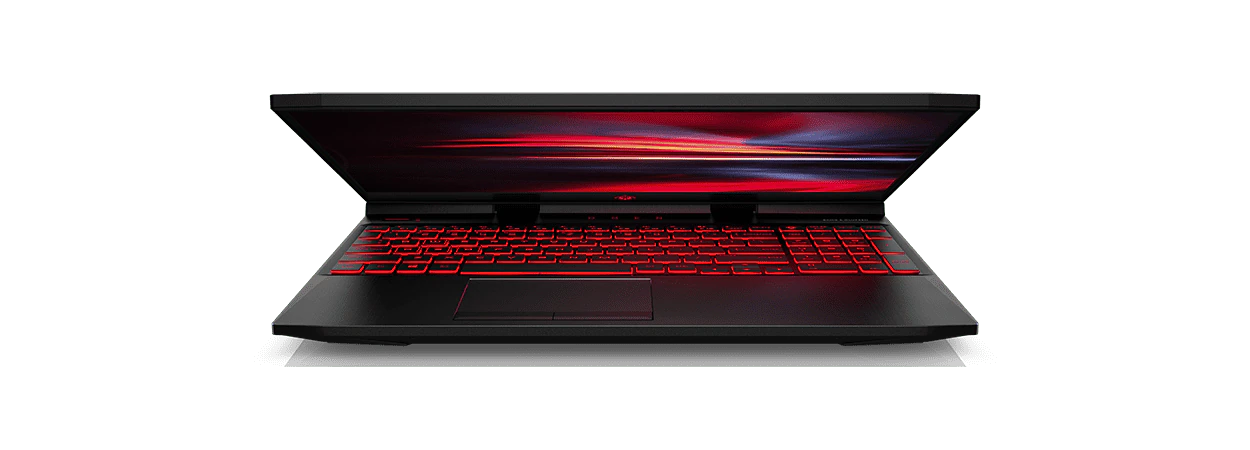Thank you for visiting the HONG KONG HP Store
-
Contact Us
CONTACT USChat with us
- Our specialist are here to help
- Live chat
- Sales
- 85264507529(WhatsApp)
-

- Post Sales
- 85230016720(WhatsApp)
Mon-Fri 8.30am - 5.30pm
(exc. Public Holidays)
Live product demo
Store finder Locate our storesSubmit feedback We value your opinion! - Location
- My Account
Search
The Best IPS Monitors from HP Hong Kong


Whether you use a monitor for working, gaming, or personal use, having a modern, updated monitor is equally essential as upgrading the core components of a PC. Unfortunately, some common complaints you may face with your outdated monitor are slower refresh rates and response time, lags, poor screen quality, and the inability to produce crisp and sharp images.
If you face any of these problems, it may be time for an update, especially to an IPS monitor. And when it comes to IPS monitors, they are highly recommended monitors for accurate color reproduction and the best possible viewing angles. That being said, IPS monitors also have better refresh rates and longer lifespans than other monitors.
Now, if that has grabbed your attention, let’s help you with more details about IPS monitors and help you choose the best IPS monitors for your needs.
If you face any of these problems, it may be time for an update, especially to an IPS monitor. And when it comes to IPS monitors, they are highly recommended monitors for accurate color reproduction and the best possible viewing angles. That being said, IPS monitors also have better refresh rates and longer lifespans than other monitors.
Now, if that has grabbed your attention, let’s help you with more details about IPS monitors and help you choose the best IPS monitors for your needs.
Contents
Best screen size for IPS monitors
When buying monitors, different screen sizes suit different users. But users often buy larger screen sizes only to face the practical difficulties. A larger display is not necessarily better; many find it uncomfortable when placed close to their eyes. Another consideration is a monitor’s pixel density, as bigger monitors can produce fuzzier images than smaller screen sizes of the same resolution.
For home use, 24-inch monitors work best. They may seem smaller to some users, but they’re adequate when you work for more extended periods from a closer distance. For users on a budget, this size can be a decent buy, consisting of all the updated features you are looking for.
Finding a monitor of the ideal size is difficult, but home or office monitors are generally best around the 27-inch sizes at 4K resolution. You will likely achieve better brightness, display, and the best color accuracy within this range while being ergonomic with the right height and width.
There are 32-inch monitors, but they are best suited for office desks with ample space to set up these monitors. Likewise, a 32-inch screen may produce grainy-looking images if the resolution is below 4K, so you must consider these factors and the budget before choosing.
For home use, 24-inch monitors work best. They may seem smaller to some users, but they’re adequate when you work for more extended periods from a closer distance. For users on a budget, this size can be a decent buy, consisting of all the updated features you are looking for.
Finding a monitor of the ideal size is difficult, but home or office monitors are generally best around the 27-inch sizes at 4K resolution. You will likely achieve better brightness, display, and the best color accuracy within this range while being ergonomic with the right height and width.
There are 32-inch monitors, but they are best suited for office desks with ample space to set up these monitors. Likewise, a 32-inch screen may produce grainy-looking images if the resolution is below 4K, so you must consider these factors and the budget before choosing.
Resolutions to consider for your IPS monitor
Resolution is a key aspect of your monitor. A higher resolution offers you more pixels, meaning you have sharper and crisper images. Considering the standard, you can undoubtedly have a fulll high definition (FHD) resolution of 1920 x 1080 pixels and an IPS panel for your monitor, providing a great viewing experience.
But FHD, a 2K resolution, is not the best of resolutions compared to QHD (3K) and UHD (4K) resolutions on the market. In this case, we recommend a 4K resolution monitor (3840 x 2160) for great image details, and it’s commonly available for IPS monitors starting from 27-inch to 32-inch displays.
Emerging technologies for better screen resolution in monitors have grown significantly. As such, choosing a 1440p monitor can be a budget-friendly decision. Of course, it is not feasible on a 32-inch display, but monitors within 24 inches to 27 inches see sharp images with 1440p displays.
Similarly, if we focus entirely on 24-inch IPS monitors, finding 4K resolutions would be difficult, and 1440p would be the highest resolution that you can find. Technically, 1080p is the standard for 24-inch IPS monitors. For those on a budget, 1080p IPS monitors from 22 inches to 24 inches will likely be ideal. But, it would be best to avoid 1080p resolutions for a 27-inch or 32-inch monitor, as they will likely produce grainy images and decreased pixel density.
Finally, pixel density becomes your primary criterion when focusing on ultrawide IPS monitors, so choosing 1080p on such a large monitor is not ideal. Instead, you may want to consider 4K resolution, even though it can be more expensive. Typically, ultrawide monitors tend to have limited options, and companies look to offer 5K resolution and more for such monitor displays.
But FHD, a 2K resolution, is not the best of resolutions compared to QHD (3K) and UHD (4K) resolutions on the market. In this case, we recommend a 4K resolution monitor (3840 x 2160) for great image details, and it’s commonly available for IPS monitors starting from 27-inch to 32-inch displays.
Emerging technologies for better screen resolution in monitors have grown significantly. As such, choosing a 1440p monitor can be a budget-friendly decision. Of course, it is not feasible on a 32-inch display, but monitors within 24 inches to 27 inches see sharp images with 1440p displays.
Similarly, if we focus entirely on 24-inch IPS monitors, finding 4K resolutions would be difficult, and 1440p would be the highest resolution that you can find. Technically, 1080p is the standard for 24-inch IPS monitors. For those on a budget, 1080p IPS monitors from 22 inches to 24 inches will likely be ideal. But, it would be best to avoid 1080p resolutions for a 27-inch or 32-inch monitor, as they will likely produce grainy images and decreased pixel density.
Finally, pixel density becomes your primary criterion when focusing on ultrawide IPS monitors, so choosing 1080p on such a large monitor is not ideal. Instead, you may want to consider 4K resolution, even though it can be more expensive. Typically, ultrawide monitors tend to have limited options, and companies look to offer 5K resolution and more for such monitor displays.
Refresh rates to consider for your monitor
If your sole purpose is to use the monitor for office and personal work, standard refresh rates of 60 Hz to 90 Hz are sufficient for everyday tasks. But if your primary use is for graphic-intensive tasks, gaming, or multimedia, you should probably select higher refresh rates.
Generally, the higher the refresh rate, the faster the monitor will refresh the screen every second. While 60 Hz is the minimum, gamers and other professionals working with graphics-based tasks can go for 120 Hz, 144 Hz, or even 240 Hz monitors, depending on needs. But a powerful graphics card will be needed to run high-end applications or games at higher frame rates.
Generally, the higher the refresh rate, the faster the monitor will refresh the screen every second. While 60 Hz is the minimum, gamers and other professionals working with graphics-based tasks can go for 120 Hz, 144 Hz, or even 240 Hz monitors, depending on needs. But a powerful graphics card will be needed to run high-end applications or games at higher frame rates.
Best HP IPS monitors from Hong Kong
HP has consistently produced some of the best IPS monitors. Next, we will look at some of the highest-selling HP IPS monitors among them.
HP E24 G4 FHD Monitor

This 23.8-inch FHD monitor with a flat IPS panel features on-screen controls, low-blue light mode, and anti-glare technology and is ideal for users on a budget. You’ll enjoy well-optimized ergonomics, multi-adjustability provisions, and the best image quality. In addition, a peak brightness of 250 nits, a contrast ratio of 1000:1, and a 5 ms response time offer high-end performance.
HP E27q G4 QHD Monitor

Another bestseller from the range of 1440p IPS monitors is the HP 27q G4 monitor. It boasts a 27-inch screen with QHD resolution and a flat IPS panel. This monitor offers energy efficiency, optimal color accuracy, and eye protection. In addition, users can comfortably work with a 1000:1 contrast ratio and 250 nits brightness.
HP Z27k G3 4K USB-C Display

This 4K UHD IPS monitor has a resolution of 3840 x 2160, and is feature-packed with HDMI, USB-A, and USB Type-C ports. There are provisions for height adjustability, a pivot stand, and a crisp display with remarkable color accuracy. This monitor also features vibrant details due to a 99% SRGB color gamut and 4K resolution. Likewise, a low blue light prevents eye strain - even when working long hours. With a contrast ratio of 1000:1 and a response time of 5 ms, the Z27k G3 is one of the best monitors for the price range.
HP Z24n G3 WUXGA Display

For users looking for an IPS monitor within 24 inches, the HP Z24n G3 is a high-end offering for your needs. This monitor consists of a WUXGA (1920 x 1200) display, multiple ports, and a 5 Gbps signaling rate.
This is also one of HP’s sleekest 24-inch IPS monitors, delivering good color reproduction and vibrant colors. In addition, with HP’s own certified blue light filter, you can efficiently work and enjoy multimedia content with its impressive viewing angles.
This is also one of HP’s sleekest 24-inch IPS monitors, delivering good color reproduction and vibrant colors. In addition, with HP’s own certified blue light filter, you can efficiently work and enjoy multimedia content with its impressive viewing angles.
HP Z27xs G3 USB-C Dream Color Display

The HP Z27xs G3 IPS monitor provides a 27-inch 4K UHD (3840 x 2160) display with a power delivery of up to 100W. This monitor is VESA Display HDR600-certified, and can create stunning visuals with color reproduction of more than one billion and hyper-realistic contrast in 4K HDR. With a well-crafted design, you can have a frameless experience with adjustable ergonomics. Easy-to-use features will help maintain an uninterrupted workflow and you can easily manage your monitor’s brightness and color presets.
Summary
By picking the right monitor with appropriate features, you will get better value for money. But there are some priorities that you may consider based on your needs:
About the Author: Kaushik Das is a contributing writer for HP Tech Takes.
- Do not go for size, and choose wisely according to your interests
- Gamers must ensure the right balance of screen resolution, refresh rates, and frame rates
- For business professionals and students, a standard refresh rate combined with the essential feature will give you better overall value
About the Author: Kaushik Das is a contributing writer for HP Tech Takes.
CONTACT US
Chat with us
- Our specialist are here to help
- Live chat
- Sales
- 85264507529(WhatsApp)
-

- Post Sales
- 85230016720(WhatsApp)
Mon-Fri 8.30am - 5.30pm
(exc. Public Holidays)
Live product demo
Store finder
Locate our stores
Submit feedback
We value your opinion!









